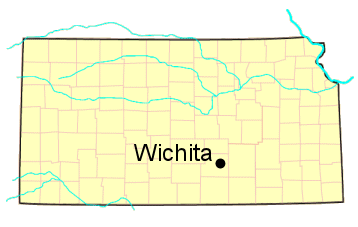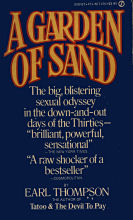
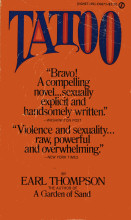
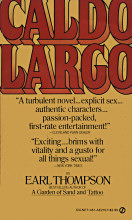
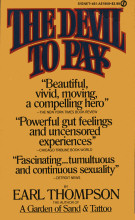
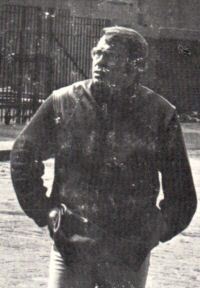 |
| Biography |
|
| |
The life of Earl Thompson is strangely shrouded, although he wrote four critically acclaimed novels in eight years and his first novel, A Garden of Sand, was nominated for a National Book Award.
Thompson was born in Wichita, Kansas, in 1931. He grew up in a poor working class neighborhood during the Depression of the 1930s. His grandfather was a major influence on his life, and his writing implies that he may have had an incestuous relationship with his mother.
He joined the military at a very young age, entering service near the end of WWII. In the early 1950s he studied journalism at the University of Kansas, drifted, and wrote fiction in hopes of finding a publisher. A Garden of Sand, Tattoo, and The Devil to Pay are reported to be thinly veiled narratives of Thompson's personal life story.
A less-autobiographical novel, Caldo Largo, was published in 1976.
Thompson died suddenly of a heart attack at the age of forty-seven in 1978. His literary light had burned brightly, but was suddenly snuffed out. The Devil to Pay was published posthumously in 1983.
Despite the critical acclaim awarded to Thompson while he was alive, specific facts of his life have faded from the public record. Still, the truths of his life are interwoven within his fiction.
Many readers continue to find Thompson's writing vivid and shockingly honest. Thirty years after his death, his books are still in print.
See Earl Thompson on Wikipedia.
Return to Top of Page |
|
|
Bibliography ( - housed in Thomas Fox Averill Kansas Studies Collection) - housed in Thomas Fox Averill Kansas Studies Collection) |
|
| |
 The Devil to Pay (New American Library, 1982) The Devil to Pay (New American Library, 1982)
 Caldo Largo (G. P. Putnam's Son's, 1976; Paperback editions: Carroll & Graf, 1991 & 1993; Signet, 2002) Caldo Largo (G. P. Putnam's Son's, 1976; Paperback editions: Carroll & Graf, 1991 & 1993; Signet, 2002)
 Tattoo (G. P. Putnam's Sons, 1974; Paperback edition: Carroll & Graf, 1991. ) Tattoo (G. P. Putnam's Sons, 1974; Paperback edition: Carroll & Graf, 1991. ) A Garden of Sand (G. P. Putnam's Sons, 1970; Paperback editions: Carroll & Graf, 1991 & 2001) A Garden of Sand (G. P. Putnam's Sons, 1970; Paperback editions: Carroll & Graf, 1991 & 2001) Return to Top of Page |
|
|
| Writing Samples |
|
| |
A Garden of Sand
First paragraph, book's Forward:
Love a place like Kansas and you can be content in a garden of raked sand. For ground it is the flattest. Big sky, wheat sea, William Inge, bottle clubs, road houses--Falstaff and High Life, chili and big juke road houses--John Brown, Wild Bill Hickok, Carry A. Nation, cockeyed Wyatt Earp, Pretty Boy Floyd, and shades of all those unspoken Indians. Out there on the flat, in a wheat sea, on the spooky buffalo grasses where the ICBM's go down into the shale and salt of a prehistoric sea wherein the mighty mosasaurs once roamed and the skies were not cloudy all day.
Tattoo
Chapter 1, p. 4:
He was ready to fight anyone his own color--the South if it would ever rise again. He was a Kansan, with John Brown's fiery raid on Pottawatomie
blazing in the gigantic auditorium mural above the stage at his school. Just thinking about killing Krauts and raping their big-breasted Nazi women gave him a hard-on. The same proposition in Japan made him a little sick.
Caldo Largo
Chapter 2, p. 18:
We cleaned up and got ready to move and try someplace else. They hosed off the afterdeck. While Eil swept the water away, Ezequiel gutted three nice red-fish, and a Spanish mackerel and cleaned some shrimp, rinsed them in a basket of sea water, and took them into the galley to divide between those he would fry for our supper and those he would chuck into a pot of thick soup he began as soon as we left port and kept going until we returned. A kind of Mexican bouillabaisse, it was great soup. On the docks of Tampico and Veracruz big pots of the soup bubbled the clock around, for days, weeks--Ezequiel claimed, for generations.
I came through the galley just as the old man was laying the chunks of fish gently into his soup. I dredged up a ladleful from the depths of the pot and tasted it.
"Gets better and better," I congratulated him.
"That is its nature," he said, "Caldo largo is the soup of life."
The Devil to Pay
Chapter 1, p. 3:
The old man was dying.
Dying in a homemade trailer house parked up a nameless niggertown alley in Wichita; a white man; a pretty good man at the end of his rope, dying as anonymously as he had lived. He could have been any poor man dying naturally anywhere on the face of the earth. Anonymous though his life had been, his poverty somehow made his essential qualities universal, timeless.
Buds of snow intermittently swirled up the frozen alley, forming little whirlwinds in the drafts between the ramshackle houses that fronted the streets divided by the alley. There was hardly a house that hadn't at least a window or two glazed with corrugated cardboard in lieu of glass. Two wars had not ended the great depression for the people who lived there. A poor-ass place to live and die. To ever have to be. A billet in any army was preferable. The waste of an interminable war was preferable to such poverty.
Wasn't it? ...
Return to Top of Page |
|
|
Personal Comments by Fred Whitehead
(author of Free-Thought on the American Frontier)
|
|
| |
I first heard of Earl Thompson from the late Missouri writer Jack Conroy. I think he had reviewed A Garden of Sand for a newspaper years before, and considered him an authentic midwestern voice, even though Jack was a bit squeamish about the incest theme. Jack's reference stirred me to find and read Thompson's novels, which were once easily located in used bookstores; now they appear scarce. As I grew up in Pratt, Kansas, and knew Wichita well from childhood, Thompson's descriptions of "poverty row" there resonated with me. In fact, my grandmother's house at 923 N. Broadway was just a few blocks away from the alley where the trailer of Thompson's grandparents was located.
Sometime in the early 1980s, I attended a Kansas writers meeting in Wichita, and a few of us made a pilgrimage to the alley, and found the actual remnants of the trailer, a skeletal wreck. But that is where the old grandpa ranted against the rich, saying "it won't be possible for a poor man to bite meat."
My late boss at KU Medical Center in Kansas City, Dr. Ralph Reed, had also read Thompson's novels, but when I commented on them favorably, Ralph replied that they took him back to the Great Depression, where (as a now prosperous Lawrence physician) he didn't want to go.
But for me, Earl Thompson was a welcome revelation, and it's indicative that I could grow up and never hear of him or his books. His was a gritty realism, but tempered by long poignant passages of wonderful lyrical writing. As a teenager, I was much impressed by Henry Miller, but Thompson's powerful descriptions of sexual awakening, ecstasy and pain rival any of the passages in his more famous fellow writer. In interviews, Thompson justly took pride in this honesty.
Return to Top of Page |
|
|
| Other Comments |
|
| |
Tom Page: "As a Kansas writer, Thompson represents the underclass of urban, industrial Kansas. The factories and rail yards of Kansas City, Topeka, and Wichita, and smaller cities such as Pittsburg and Salina, are the Kansas places of his trilogy. The popular image of a bucolic Kansas of kindly farmers (there are very few left), small towns, and quilting bees is totally foreign to Thompson. He never experienced the small town world of a William Allen White and never bought into its mythology. But he does write, and write well, about his Kansas. ...
"Was Thompson an important writer? Certainly he was, but a difficult one for readers with conventional attitudes. He makes them think! Nominated for a National Book Award and selected by the Book of the Month Club, he was difficult, recognized, and popular. Was Thompson a national writer? Yes, but an American writer with an international perspective.
" [Read Page's complete online essay. ]
Doug Rennie:
"Yet, while Garden and Tattoo are undeniably unliterary in many ways, their unpretentiousness and raw conversational tone make them triumphs of gross realism--a quality reinforced by Thompson's frequent injections of the era's popular culture into his narrative: uncolored Oleo margarine in plastic bags with a little dab of yellow dye you had to massage into the cream-colored glop to make it look like butter. Powdered milk, Nehi grape, and relief lines. ...
But it is always the urgency and pain of human beings that dominates the elaborate historical architecture.
" [Read Rennie's complete online essay. ]
Donald Ray Pollock, author of Knockemstiff: "I had never read anything like Thompson's novel [A Garden of Sand]. True, it was filled with sex and lice and grime and alcoholism and mean poverty, but it was also beautiful in its own sad and sordid way. The characters were real, so real that I loved some of them and hated others with a passion. And I'd never read a book that had people in it who were so much like the ones I'd grown up around in the holler (though Thompson's world was far rougher). [Read Pollock's complete online essay. ] Return to Top of Page |
|
|
|

